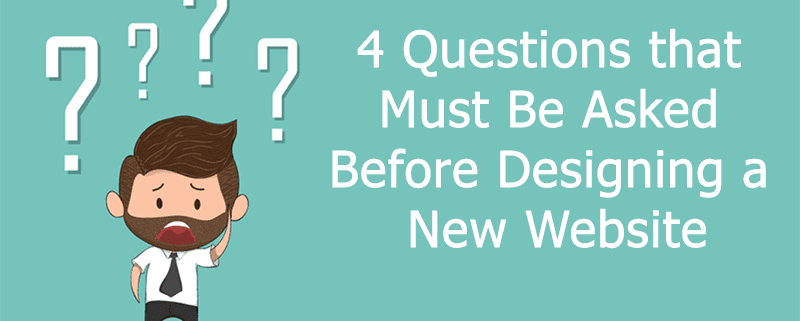4 Questions that Must Be Asked Before Designing a New Website
It’s all too common for a business owner to behave as if their company’s website is for them. Worse, there are all too many Web designers and agencies who are complicit in perpetuating this behavior. What the business owner, designer and agency all fail to recognize is that a website is not an exercise in vanity. Its main purpose is not to impress site visitors by being creative.
A website is a tool prospective customers use to find a solution to their problem. Consumers are not arriving at business websites so they can be entertained. Their goal is not to be amazed or impressed, but instead they need to find a solution that will solve their problems. For example a customer is looking to product photography service and a photographers website shows only model photography images just to make it look attractive will drive away customers because the customer is searching for product photography service and even if the photographer this service it is not shown the website. So it is appropriate to say that consumers have problems and they are looking for solutions. A website that concentrates on its own appearance and goals, above the consumer’s problem, is not presenting solutions any consumer will find relevant.
Things to be Avoided
If business needs come before consumer needs then the design, content, targeting and overall goal strategy are negatively affected.
The website design will be tailored to the business owner’s and designer’s preferences, not the prospect. The messaging and brand voice will be a dictation of what the business thinks is important and not what the prospect is looking for or cares about. The user intent will be misunderstood so the call-to-action and overall goal strategy for the website will entirely miss their mark.
Questions to be answered before website designing is started
It is easy to set up a website for success when it’s being built on the proper foundation. To do so, one simply needs to identify the who, what, how and why of the audience.
● Who is the website being built for?
● What are their problems they are trying to solve?
● How do they arrive to the website?
● Why are they there and what are they hoping to find?
Identify for whom is website is being designed for ?
This is a very simple question, which is why it’s so easily missed.
At its core, a website is a communication tool. It’s a place where a website owner can communicate ideas, products and services to site visitors. The success or failure of the communication is determined by the message’s level of relevance. When a website ignores the consumer and is built off the website owner’s vision, then everything about the consumer becomes secondary, if not completely ignored. The question, “Who am I trying to talk to?” is never asked.
This is fine for something like a personal blog, but for a business, it is detrimental to the website’s success. A message can only be relevant when the speaker understands who they are talking to and what the audience cares about. A website must recognize who the audience is. Then, and only then, can the website begin to cater to the audience.
Recognize what problem the prospect is trying to solve ?
Knowing who the website is being built for is the key first step, but it’s not enough on its own. There’s also the why. Why does the target audience need the website?
Why is the target audience, the consumer, online in the first place? What is happening in their life that has caused them to go on the hunt for a solution? What’s driving them?
When the audience is identified and their motivation is properly understood, then the most dangerous obstacle to any website has been successfully passed. The website can now be helpful instead of braggadocious. Instead of talking about how great the business is, the website can begin to talk about how great the consumer can be.
The next two questions are two fold much like the first two.
Address the context of the site visitor
Once the audience has been identified and their motivators are understood, it is then necessary to understand the context in which they arrive to the website.
What keywords does the website show up for when consumers are searching for answers to their problem? What pages of the website show up for what keywords? What is the user intent for each keyword? Are users arriving through search engines or through paid channels or through social media ?
Some consumers will arrive using a certain set of keywords and enter the website through specific landing pages that will differ from others.
Some website visitors will be ready to buy. Others will be unaware of what solutions even exist for their problem. This is known as the buyer’s journey and it’s a dilemma every website must address if it’s going to communicate, sell, effectively.
Saying the right thing at the wrong time will make a relevant message irrelevant.
Provide the information the prospect needs
Finally, once the who, what and how have been identified, a relevant engaging user experience can be built.
The motivated buyers can be presented with content that guides them to a conversion. The discovery stage consumers can be presented messaging that captures and graduates them further along the buyer’s journey.
The website’s structure, design, and content can be tailored to be exactly what the consumer want and needs.
“You hit what you aim at, and if you aim at nothing you will hit it every time.” – Zig Ziglar
This means if the website is created without answering the above 4 questions then conversion rate of your website will be very low, compared to what website could deliver if the above 4 questions are answered while designing a website.



